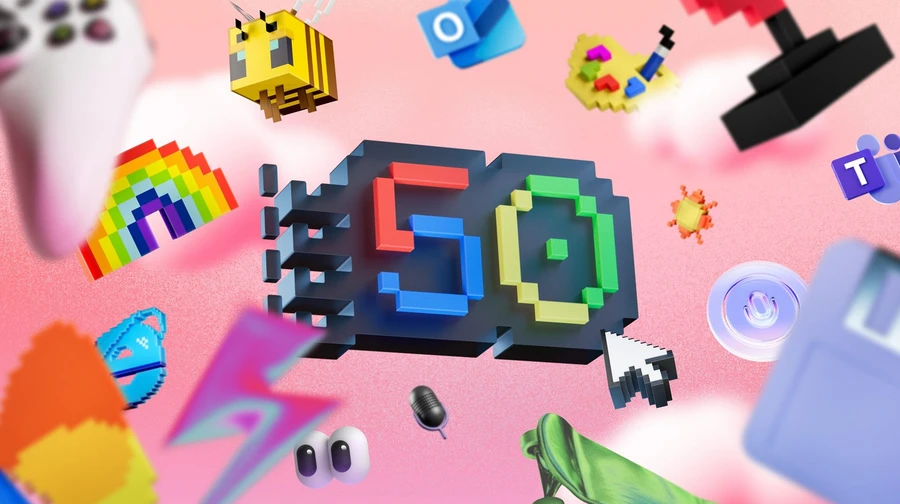
Spring 1975, USA. In Harvard's hostel, 19-year-old Bill Gates and his 22-year-old friend Paul Allen not just believe in the future of computer technology-they want to become his architects. On April 4, 1975, they founded a small company that was destined to change the world . The company we know as Microsoft .
As is often the case, at first, few people have taken them seriously. But the boys were stubborn, cunning and purposeful. So they did not just survive, they turned the world of technology and became a legend that was created right before several generations of computer fans and ordinary users.
Let us mention the main milestones of the history of the legendary company. Well, let's start with the founders themselves. Because the history of companies is very often the stories of people who are behind them, and Microsoft of course is no exception.
Who are you, Bill?
Bill Gates is so legendary that a variety of rumors go about him. He was also a prodigy, who could not break away from the computers of the time and had crazy mathematical abilities, and a rotating young businessman who skillfully manipulated his environment, including Paul Allen . Both the Garage guy and the heir to the influential family. And the genius that created the revolutionary software and the trick that "lent" other people's ideas. And the person walking on the heads and the largest philanthropic whose donations are calculated by billions. And, of course, in combination-seer, illuminat, Mason, creator of Covid-19 and the secret ruler of the universe.
And some of this is true. But to understand where the legend, and where the reality, one has to look into the past.
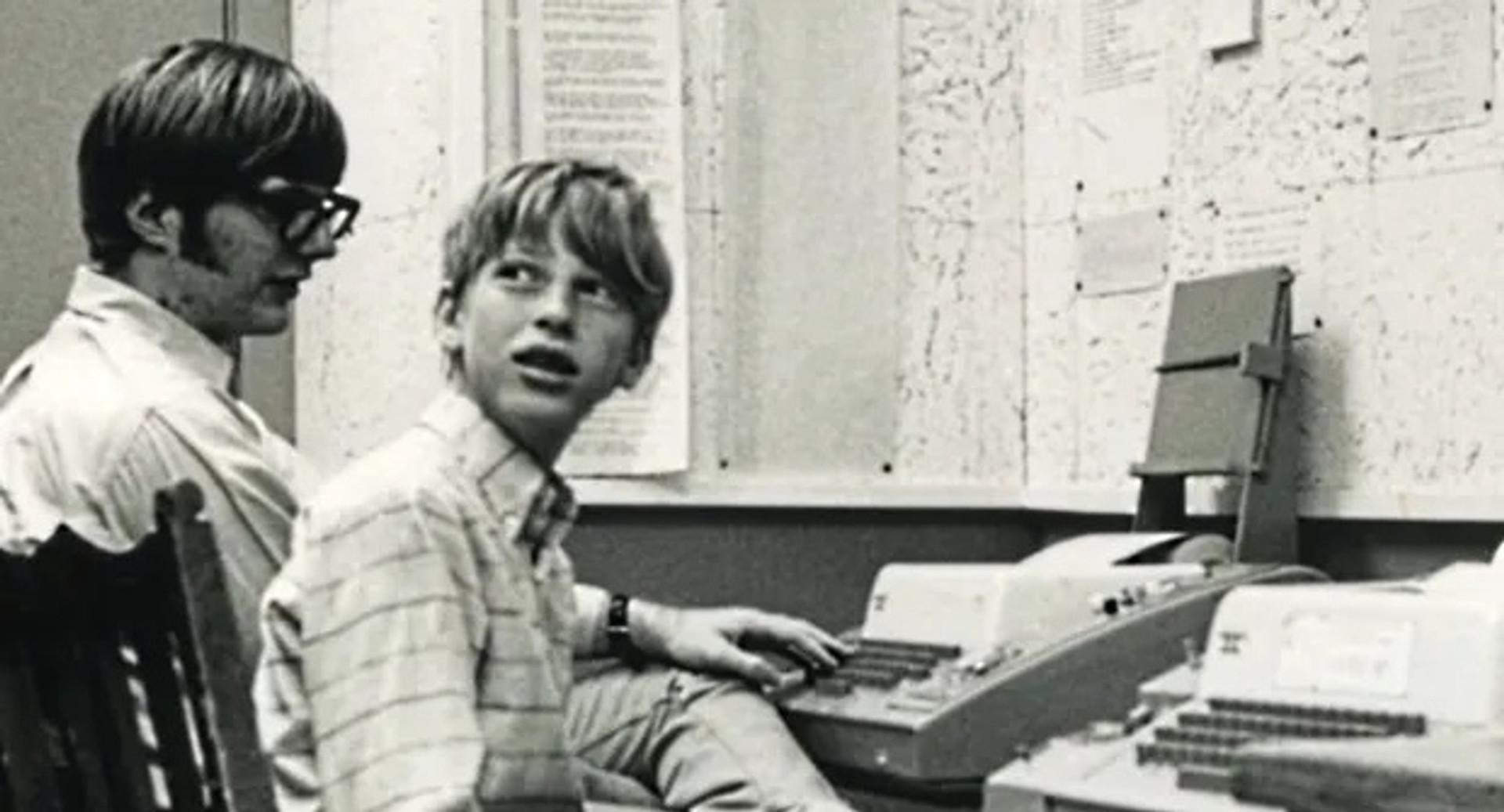
Bill was born into a wealthy family. His father, William Henry Gates II, attributed his family to the middle class, but he was a little. In fact, Gates lived not just comfortable, but very comfortable. His grandfather, William Henry Gates I, was not marked by great public activity, although his father, great -grandfather Bill, was a state legislator and even a mayor. And Bill's father became a successful corporate lawyer and headed the Washington Bar College.

Bill's mother was also far from a housewife. Mary Maxwell Gates came from a banker family - her grandfather founded the National City Bank in Seattle. Despite the teacher's education, she quickly plunged into the world of influential people: she was part of the boards of chambers, charitable foundations, children's hospitals, insurance companies and even at & amp; t, well, and in 1980, she was in the UNITED WAY Directors, where John Opell was her colleague. In fact, this fact is very fond of associated with the fact that after a while IBM has signed a fateful contract with a small Microsoft, who was destined to become a monopolist in the operating system market. But let's talk about this contract a little later. In the meantime, let's return to the end of the sixties and look at two very promising students.
Paul Allen and Birth Microsoft
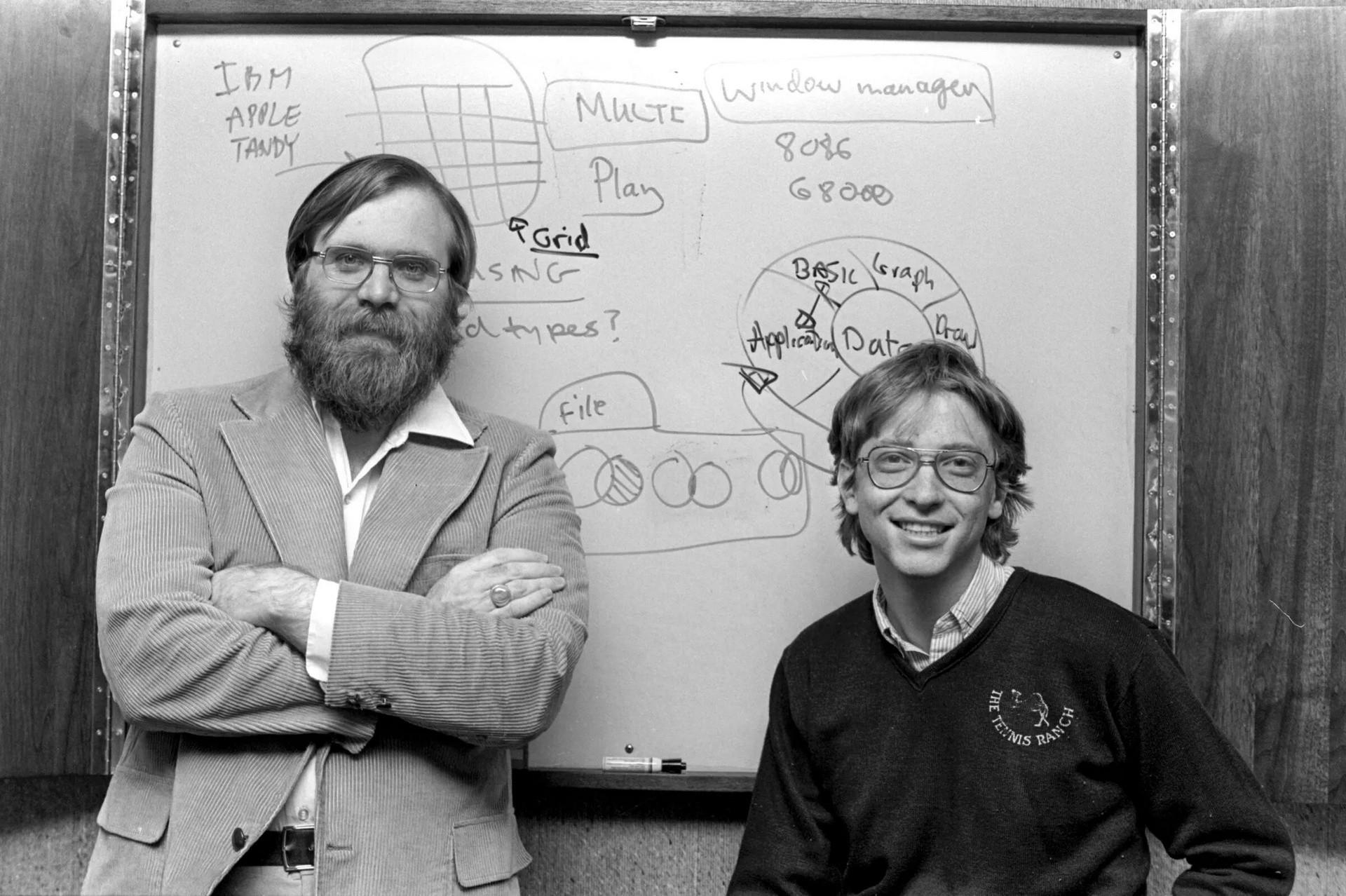
Paul Allen was a little older than Gates, and looked more solid (Bill up to 30 years perceived as a teenager), but these two had a common passion - programming. We now have the Internet , numerous online courses and programming on your mobile phone. And a neuron in this case will help. Another thing is the end of the sixties! In those days, this hobby was quite exotic and required considerable effort. It was not only necessary to understand the algorithms more or less on your own, but also to find what to implement the program, to negotiate about machine time, to look for options.

In 1968, the school, which studied Bill and Paul, received access to the PDP-10 computer. This is Mainefraime that has occupied the whole room and will not call it a computer in the modern sense - no screen, mice or even keyboards. Instead, a teletype, an electromechanical printing machine that printed everything on paper, accepted commands and read punch. They programmed on paper, launched through the tapes, and the result ... also on paper.
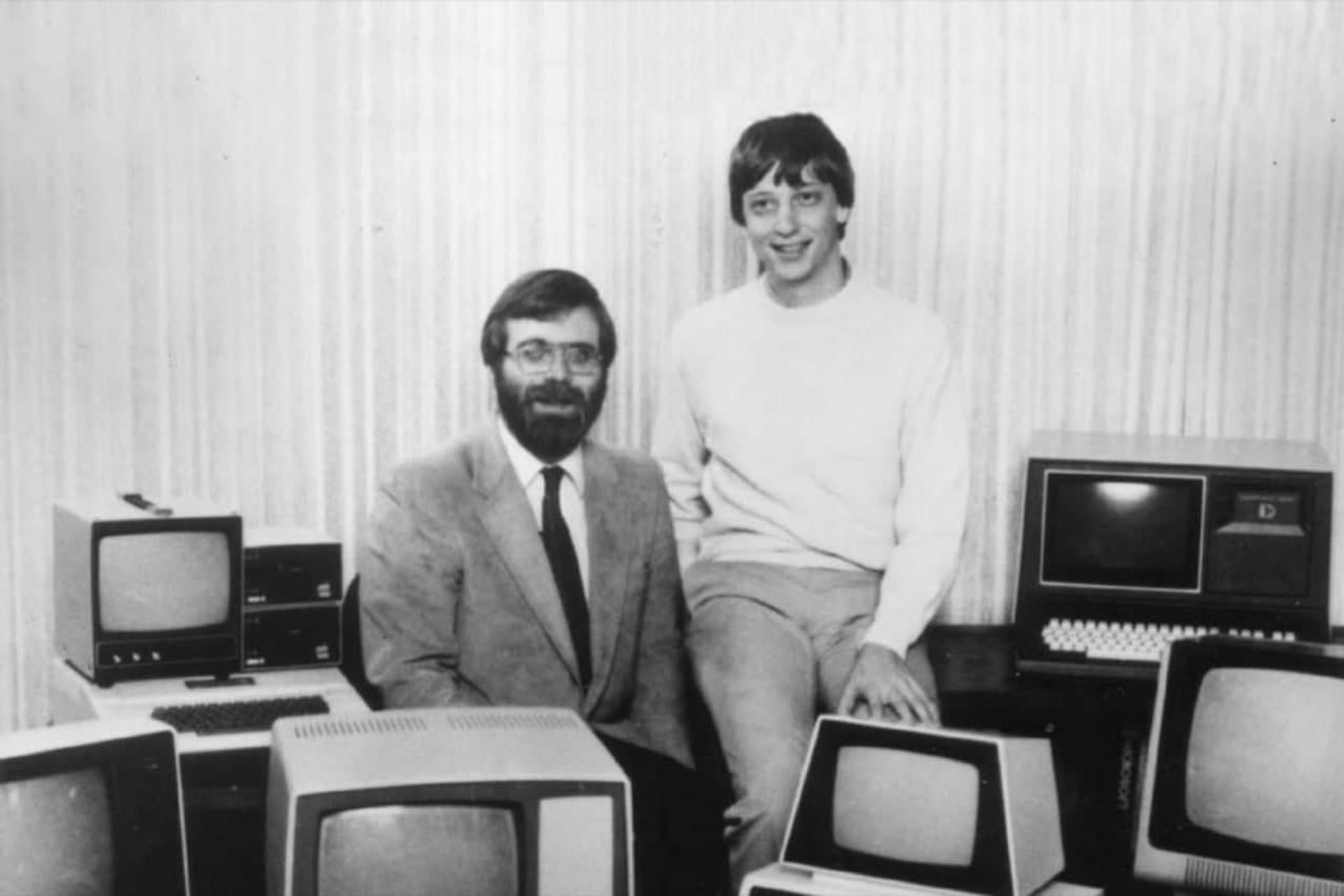
The boys became fascinated with programming and even found the Bagues in the Computer Center Corporation (CCC) system. For this they were given free time by car - an almost perfect agreement. However, they somehow broke users and received a short -term ban. But this did not stop them: they quickly switched to more serious things.
The first business experiment is Traf-O-Data. Allen and Gates have developed an Intel 8008 -based system to analyze road traffic. And all would be fine, but the state suggested a similar solution for free.
But the real breakthrough occurred at the end of 1974. Paul Allen came across an article in Popular Electronics about Altair 8800 - the first available Personal computer based on Intel 8080 processor. And what is the first? Of course, Basic is a popular programming language.
The boys called the creator Altair Ed Roberts (Mits) and wrapped a little - they say, the Basic interpreter for Altair they had almost ready. He became interested. The only problem was - they did not have that the interpreter, they did not even access the ALTAIR. And it could not be: at the time of the conversation, almost no one has seen him alive.
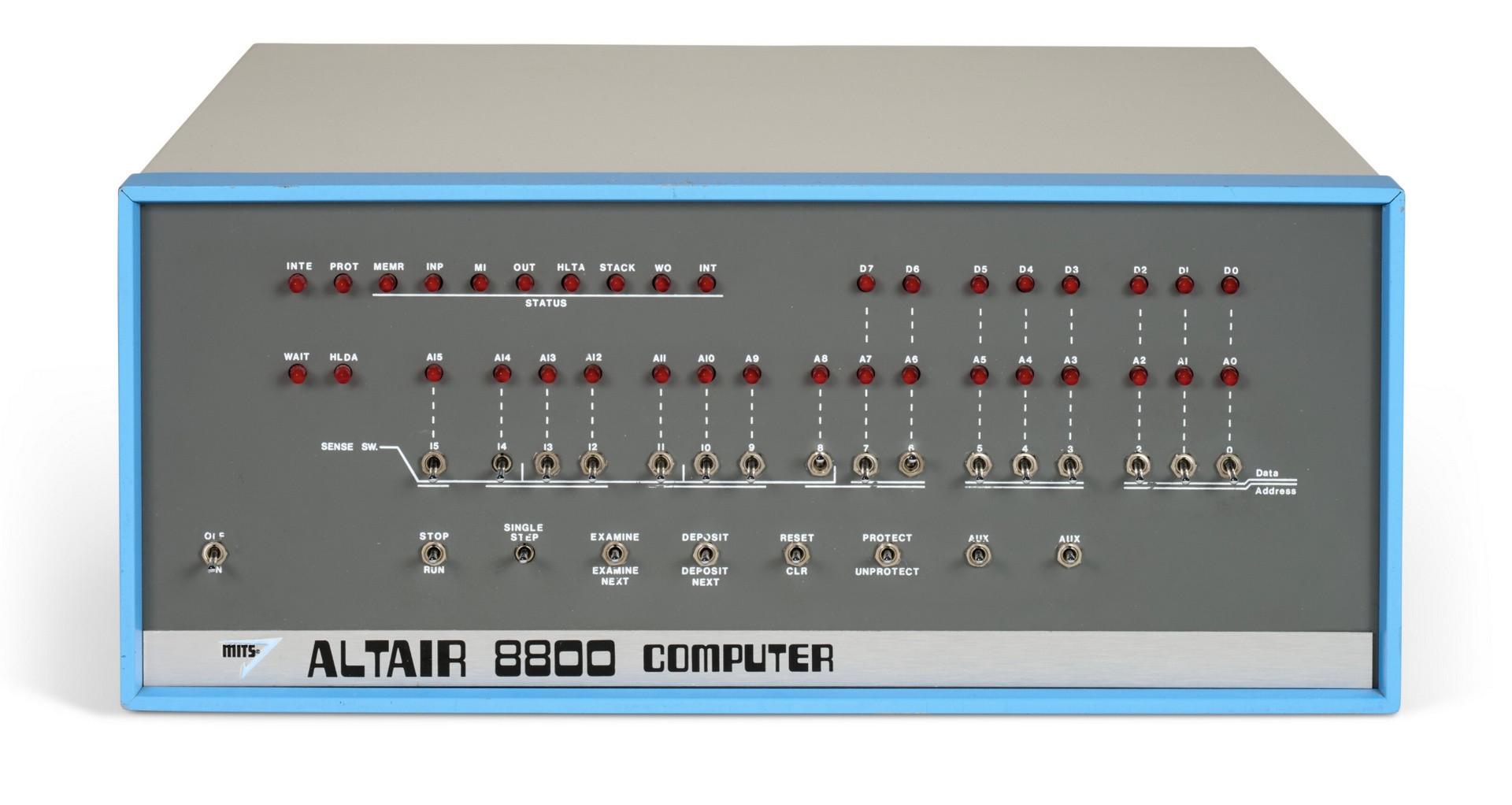
But there was a trump card-the same PDP-10 Mainefraime, on which they had machine time. So Paul quickly wrote an Altair 8800 emulator to test the code. And Gates, together with Monty Davidoff's mathematician, wrote a Basic interpreter from scratch from scratch, which contained in a fantastic 4 kilobytes of memory (this is less than weighing the modern application icon).
Paul Allen flew to Roberts with a punch tape, downloaded Basic to real Altair-and everything worked for the first time (if you ever programmed and tried to launch your code on another car, you know that this is in itself-achievement). The amazed Roberts immediately offered Allen's work at Mits, and in July 1975, they officially founded Micro-Soft with Gates (the hyphen disappeared a little later).
It cannot be said that everything was perfectly perfect. Basic stole massively - just copied it without payment. Gates even wrote an angry open letter to programmers calling for a software. However, the young company did not stop it. They adapted Basic to dozens of platforms (including Apple II) and gradually expanded the staff.
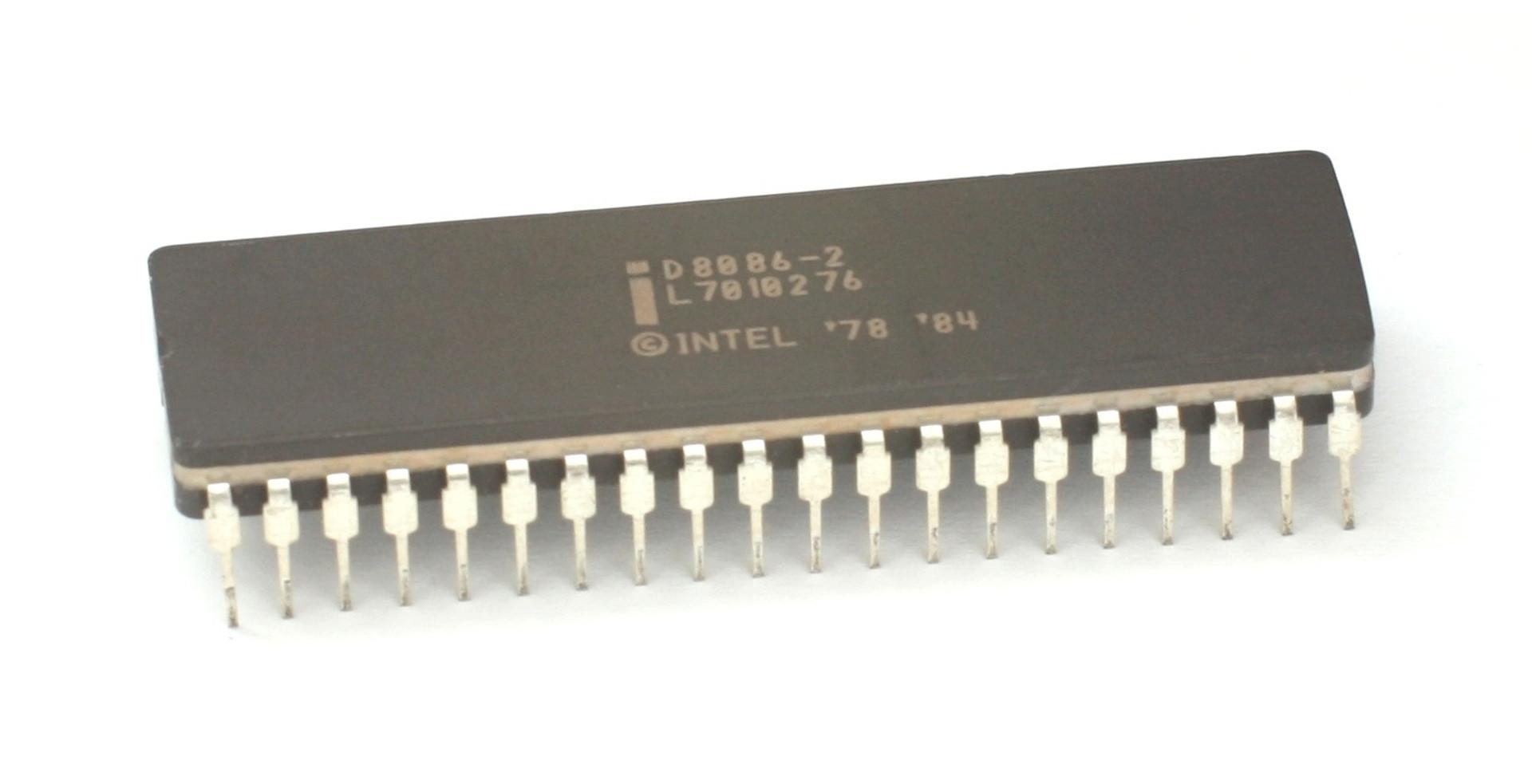
Well, then the main event happened. Allen began to develop software under the very promising Intel 8086 processor before he officially came out. Microsoft also actively worked with CP/M (Control Program for Microcomputer)-the most popular OS of the time for 8080 and ZIILOG Z80 microcomputers at the same time for 8-bit microcomputers.
And it was these projects that opened the door to a large contract with IBM, which will make the Microsoft technological empire.
Contract Z IBM TU MS-DOS
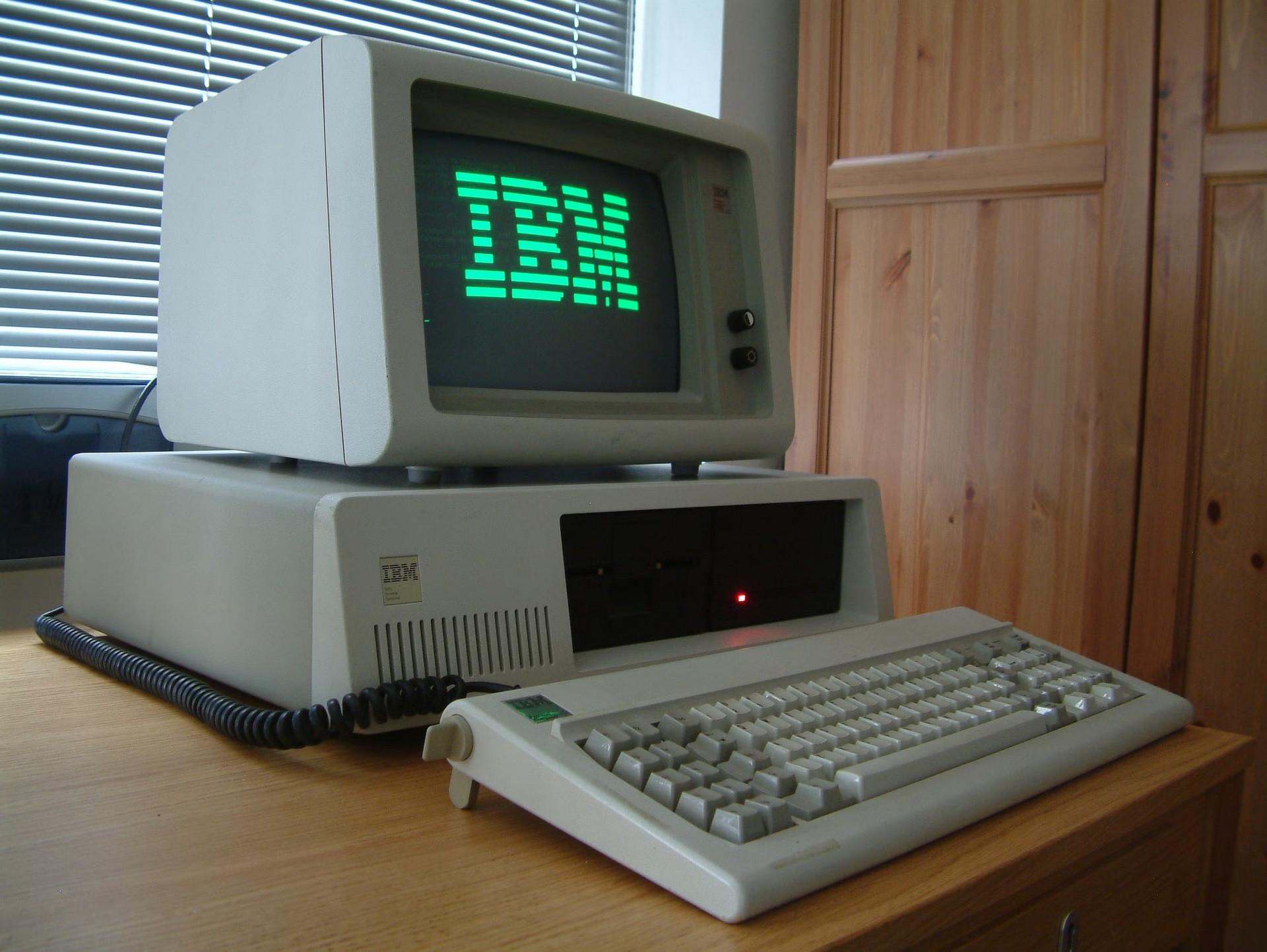
The history of the IBM contract is evaluated very differently, and around it legends are about the same as around the person Bill Gates himself.
So, IBM was preparing her first personal computer (remembering the expression "IBM-compatible PC"?) And was in a hurry. Around competitors, and bureaucracy and antitrust legislation. So they decided to take the risk: instead of internal developments - third -party components, open architecture and software from someone who can create it.
As for programming, they turned to Microsoft, a company that has already had a positive impression after success with Altair Basic. But for the development of the IBM operating system, it first went to Digital Research - the creators of the above CP/M operating system. But the negotiations broke. Why - the story is silent, but Microsoft has taken advantage of this chance.
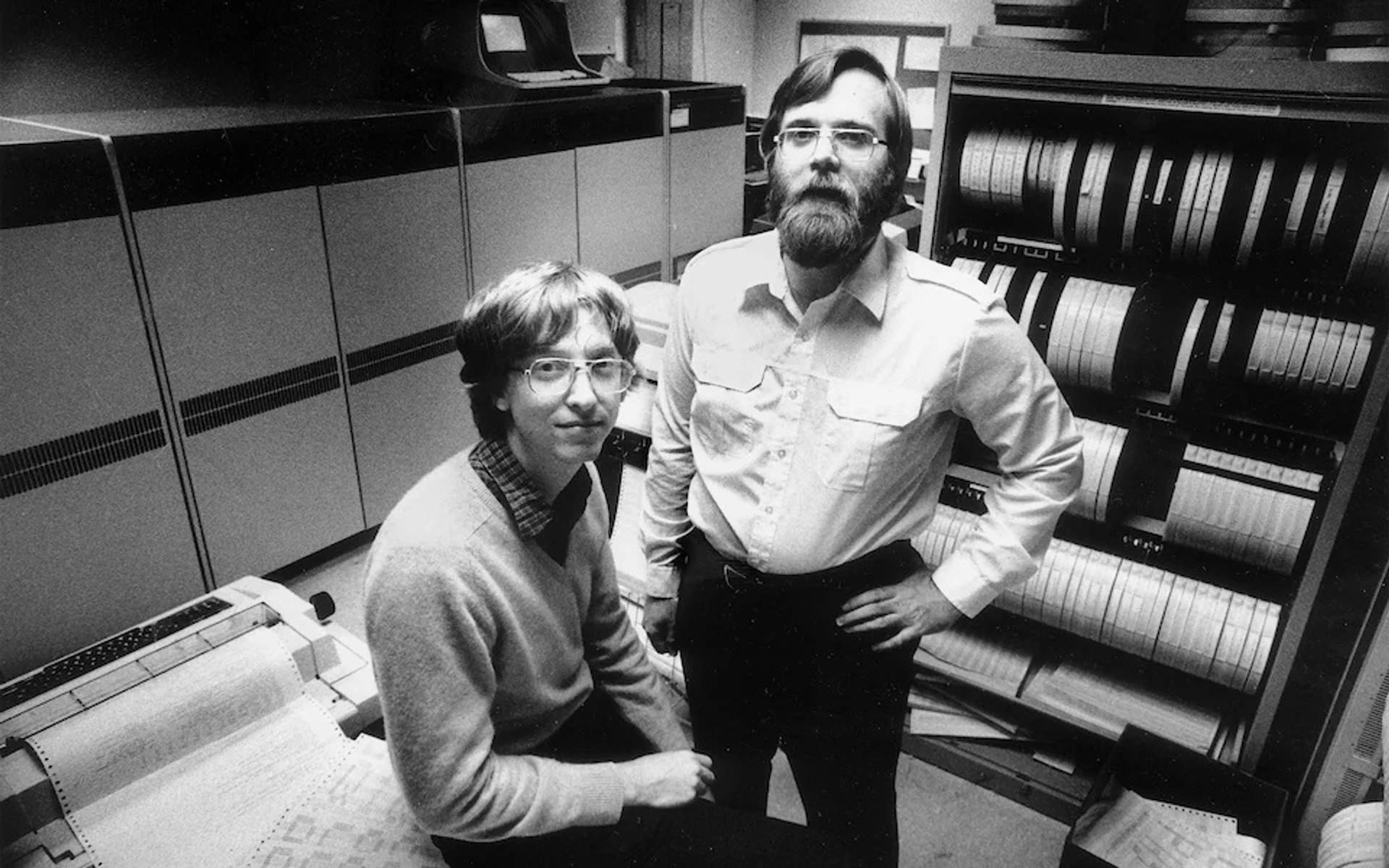
There was no operating system in Microsoft. But there was Paul Allen, a high -quality programmer who had a good "smell" for useful acquaintances. They knew that Seatle Computer Products has a semi-prepared system called 86-DOS (it-QDOS), which their engineer Tim Patterson wrote as a replacement for CP/M. Microsoft quickly licensed it, and later bought it completely.
The IBM deal looked pretty everyday: Microsoft sells their OS called PC-DOS and programming languages for $ 430,000. But the key point: Gates has left the right to sell the same OS to other manufacturers-already as MS-DOS. IBM, which was more interested in iron, did not deny.
And then the car twisted: IBM PC was released in August 1981 and became a megahite. Other companies started to make compatible computers - clones. And each of them needed MS-DOS. So Microsoft became the monster of the industry.
And in the video below you can see the game donkey.bas. It spread with early PC-DOS and BASIC interpreter. Bill Gates and Neil Konzen wrote it in one night to show the Basic and IBM PC.
In general, the legend of the IBM and Microsoft contract is a legend that this is Bill's mother - an influential Mary Gates - "staged a son's contract" through acquaintance with the IBM top organization. Who knows ... But most likely it is just a legend. The connections may have helped a little, but we do not forget: we were no longer just guys who did not go out in the university and hang around the clock around the clock, but a promising company with millions of turnover at that time. Plus connections. Plus ingenuity, courage, and a little luck. As always in the history of big deal.
Steve Balmer is Microsoft's loud voice
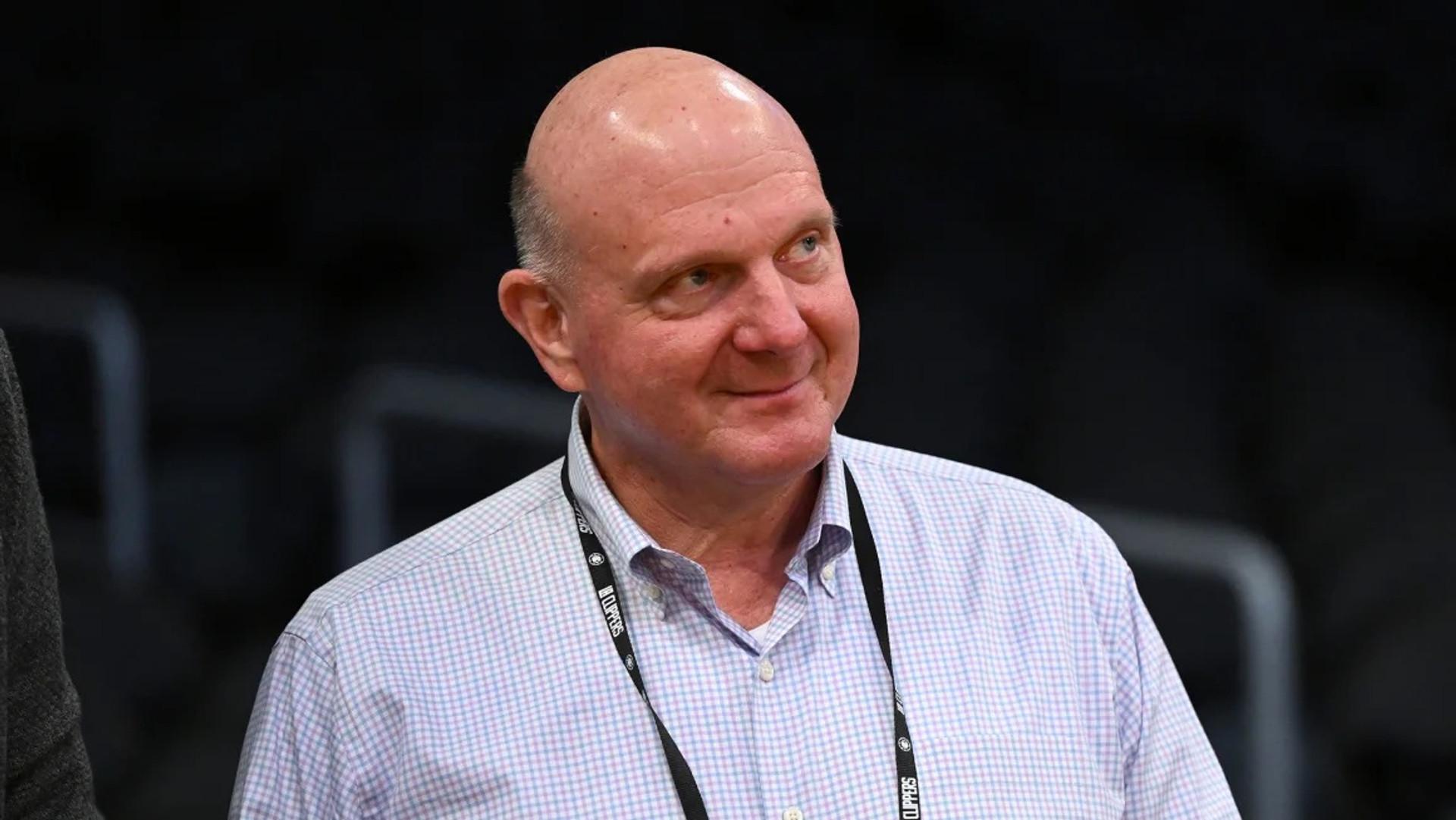
Speaking of people who were the face of early Microsoft, it is impossible not to mention Steve Balmer - one of the first employees of the company and a close friend Gates. He came to Microsoft for a business manager's position in 1980, becoming a thirty company employee. Then he left his studies at the Stanford Business School, believing in the prospects of the young company. And I didn't lose.
Balmer immediately became an integral part of Microsoft culture. If Gates was the brain, Balmer was voice and energy. When he came out at the Windows presentation, it was not just a product presentation, it was a performance of one actor. He jumped on stage, shouted, sweaty, tore a shirt. Its famous "Developers! Developers! Developers!" became a legend long before the era of viral videos.
In contrast to the cold analytical mind of Gates, Balamer was a living embodiment of passion for the product. As they said in Microsoft: "Bill comes to the kitchen to check if the refrigerator works properly. Steve comes to eat the whole cake and tell the chefs that they are well."
It was Balmer who built Microsoft sales in the most important years - when the company turned from a small startup to a corporate giant. His charisma helped to conclude key agreements that made Windows a de facto standard for millions of corporate computers. And later, in 2000, when Gates decided to move away from the company, it was Balmer who became his successor in the post of CEO.
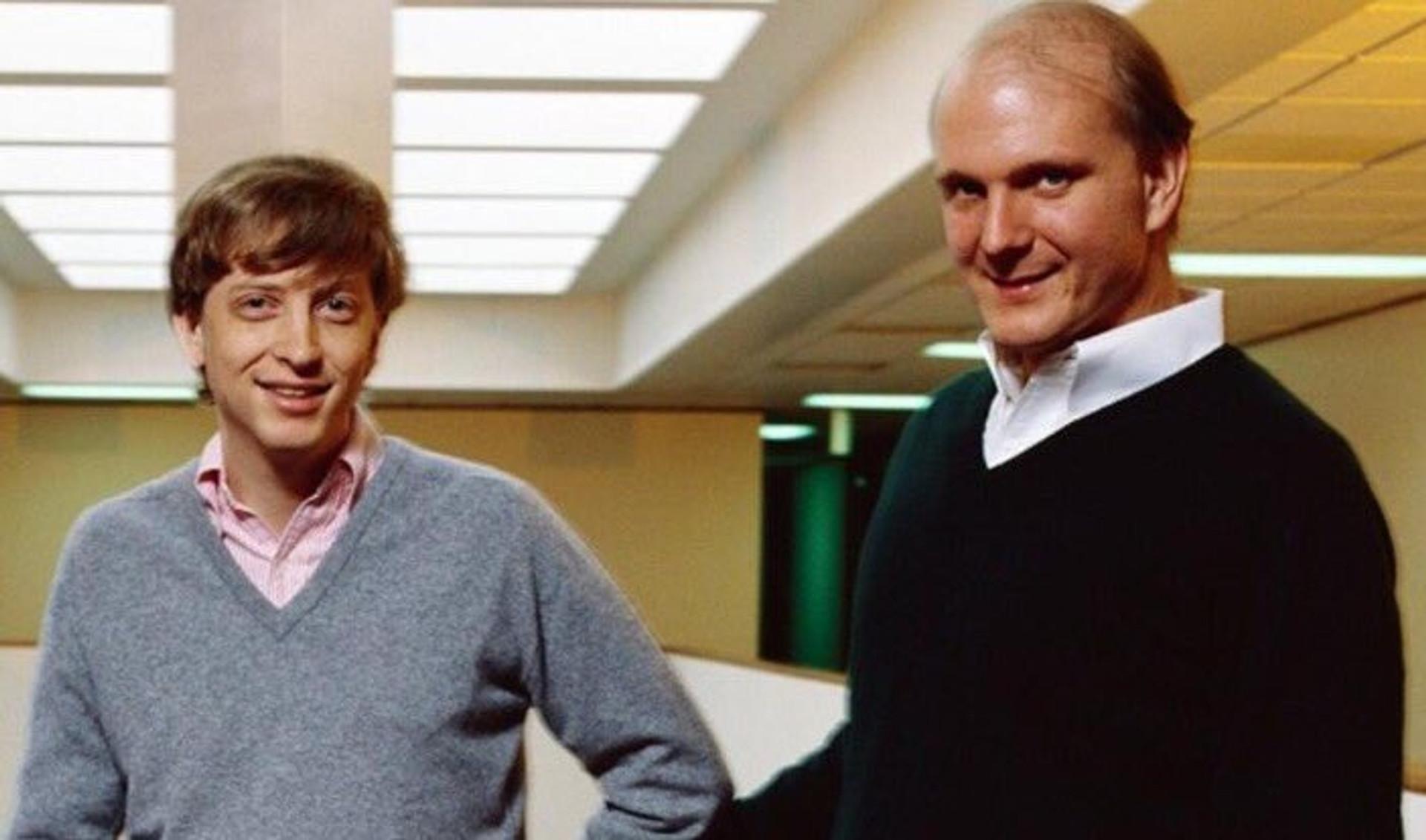
And only with time when the world has sharply turned towards mobile devices, it became clear that Balmer's energy could not replace the visionary needed for the new technological revolution. But this is a completely different story.
Windows
MS-DOS, of course, is a luxury. But not everyone likes to exercise with the command line. Everything had to be inserted by hand from the keyboard: C: \ & gt; and further some magical commands, type Dir, Copy, Format .
But in the same seventies there were companies that thought about how to improve your custom experience. For someone, it will sound strange, but the pioneer of a computer graphic interface was Xerox. It was in its laboratories that a computer with mouse, windows, icons and graphical interfaces originated. They have literally created what we call today a "habitual operating system". However, Xerox did not know what to do with it, but there were those who understood. And they were Apple led by Steve Jobs. In principle, it is no wonder.
So Apple is inspired by Xerox work, created Apple Lisa - the first PC with a GUI graphic interface (GUI). He was like a Ferrari among scooters: beautiful, revolutionary, and ... cost $ 10,000, which was a little too much. Then he was Macintosh - cheaper, stylish, with mouse and icons, Jobs showed everyone what the "computer of the future" should look like.
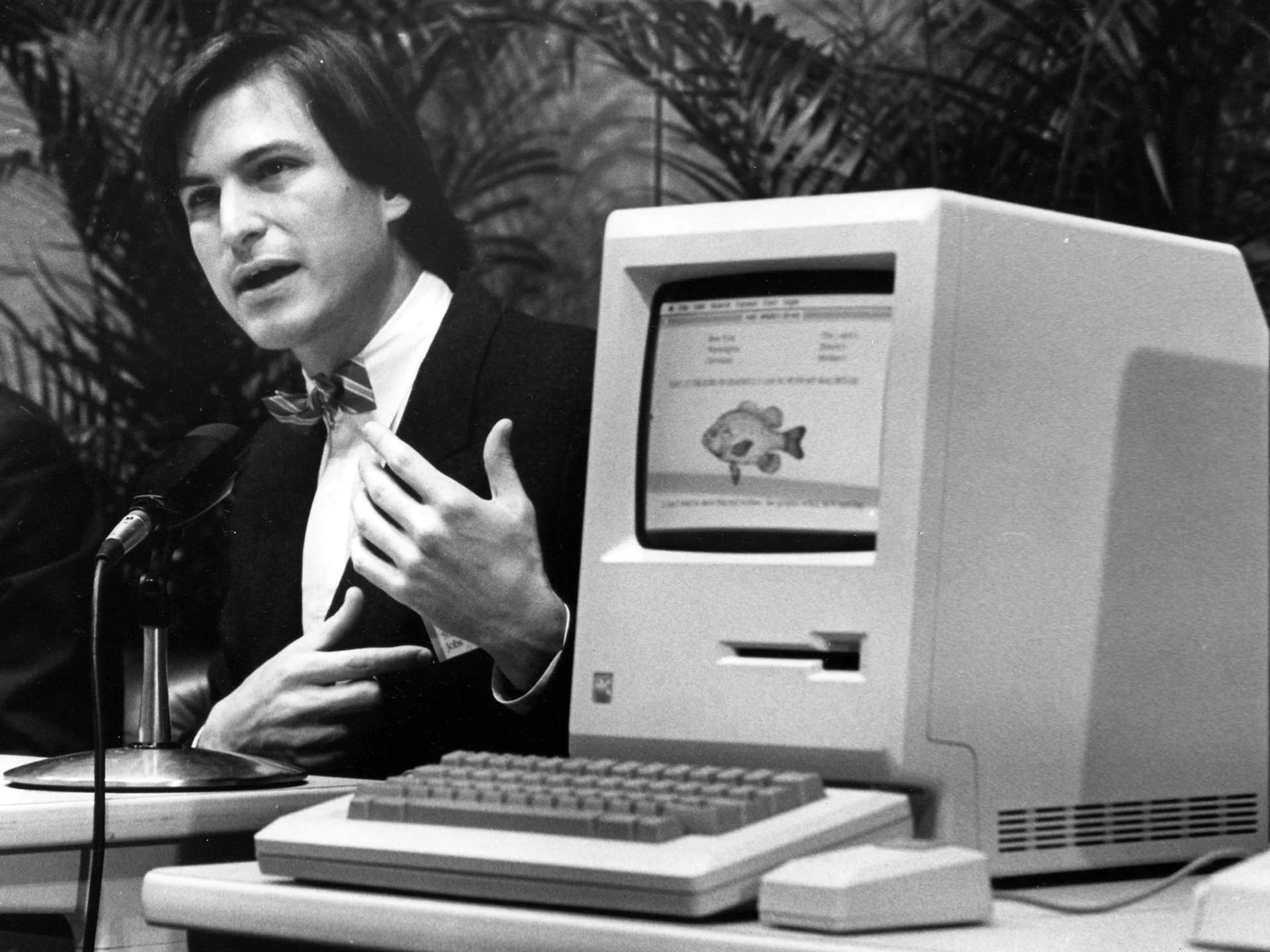
Gates also came to Xerox, looked ... and decided to do something similar, but cheaper. This is how the idea of Windows appeared . Not the operating system as such, but a graphic shell for MS-DOS.
In 1985 she was published by Windows 1.0. It is not that the world immediately made a delight - the windows could not be moved as he pleased, only a mosaic: one next to the other, but without any freedom. The mouse was, but many did not understand why she needed at all. However, there was already Paint, and the reversi was a game that probably made more people learn to click than any textbook.
In the video below 30-year-old Steve Balmer advertises the first Windows with perseverance, which can be envied by any modern blogger or face of the "store on the couch".
Although the system looked awkward, it for the first time gave the average user a chance not to climb the Manual to find out how to copy the file. Technically, it was a challenge: computers were then similar to today's calculators - Intel 8088 processor, 256 kilobytes of RAM, and it was considered a luxury. But Microsoft did not stop - even though sales were, say, restrained, and reviews were diplomatic.
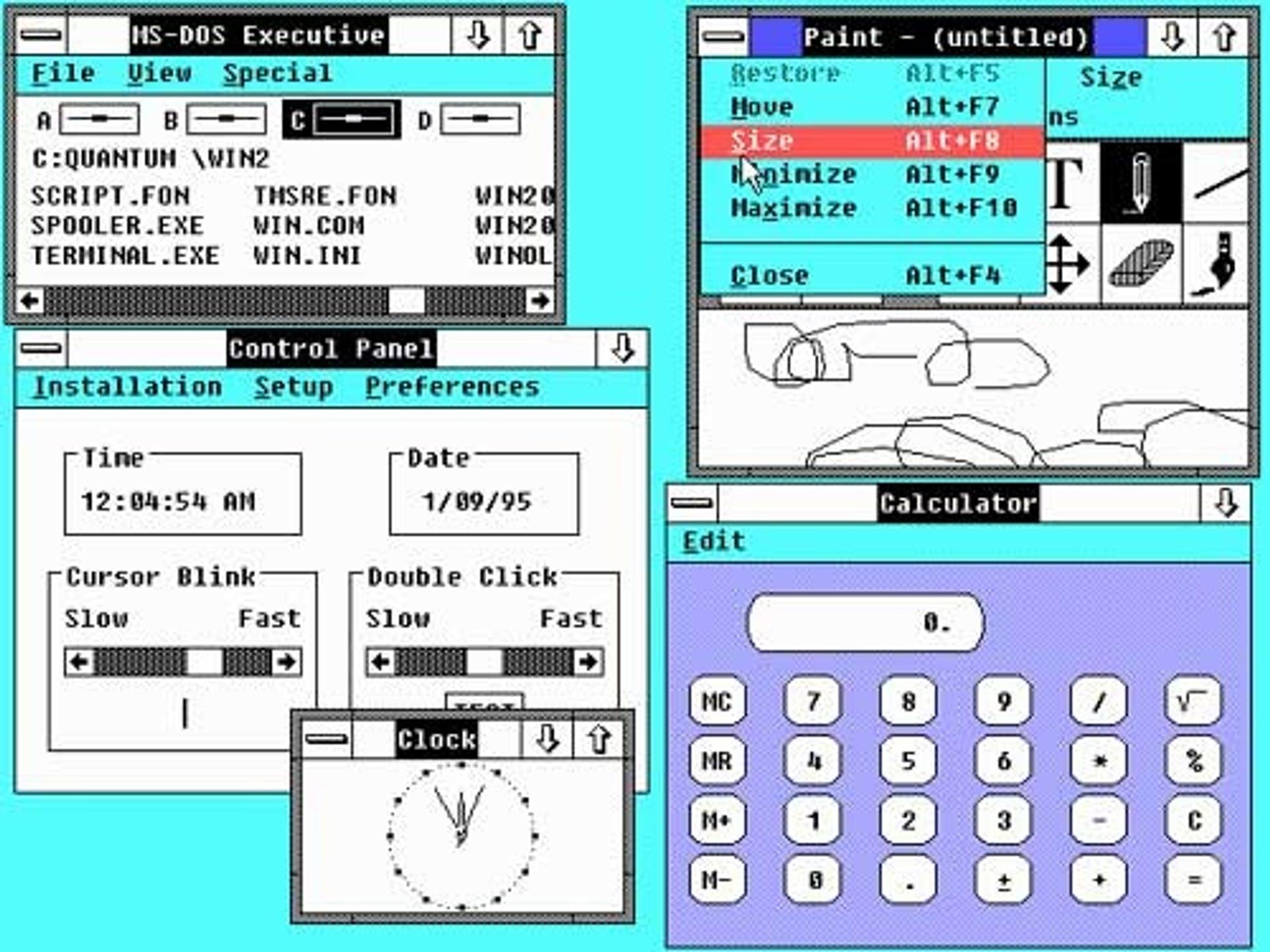
Two years later, Windows 2.0 appears: windows now know how to overlap each other, there are notes of reduction and increase - that is, you could now make the window small, large or again small. There has been support for new processors, more colors (up to sixteen!), Hot keys and a more lively work in general. The control panel received a couple of more sliders and ticks.
And then came in 1990. Windows 3.0. And it was already a boom. The look is more pleasant, works more stable, supports normal memory, starts more programs at the same time, and most importantly - it really looks like a system that you want to use, not just tolerate. There were already programs, file manager, games, antivirus, the ability to listen to sounds with CD - it was felt that we were confidently walking in the future. The Saliss "Kosinka" and "Sapper" became icons of office leisure: who did not lay the cards during work, he either really worked or could not use the mouse.
And from 3.1 it became more serious - at first they planned just cosmetic edits, but a product that became the standard for a long time. Windows was no longer catching up with others - it came first. And then - there were Windows 95 chips, worthy of Windows 98, a little questionable Millenium, again super -successful Windows XP, Vista's fault, convenient Windows 7 ... Well, modern versions, of course. And yet - server, who firmly occupy their niche.
Office, Explorer and Business
Gates realized that the Internet was not a whim, but the future, although he walked on a thin ice and almost missed this revolution: in the book "The Road Forward" / The Road Ahead (1985) there was no word about the global network. But then - 180 ° turn and the famous Internet leaf. Microsoft was urgently translating, and Gates confessed that it was the moment of the greatest fear in his career - not to have time.
So Windows appeared for the Internet and, of course, Internet Explorer. Once upon a time in the browser kingdom he ruled Netscape, but Microsoft provided her Internet Explorer complete with Windows for free - and this killed a competitor. IE6 has become a de facto web platform: uncomfortable, unstable, but all-end. However, this king did not stay on the throne for a long time: Firefox and Chrome appeared.
Of course, it is worth mentioning Microsoft Office . Without the army and guns, but with Word, Excel and PowerPoint Microsoft won the planet's offices. Excel destroyed accounting books, Word - printing cars, Outlook - paper sheets. Office became the standard, and the .doc format - its weapons.
But the main thing is a corporate segment. Microsoft sold not just Windows, but an entire ecosystem: Active Directory to drive users, Exchange for mail, SharePoint for workflow. It helped IT director to avoid "Zoo Technology", when when changing something one, it was often necessary to change everything. So specialists took Microsoft - because it works. Microsoft knew: business does not like surprises, business loves stability. And she sold this stability - for very good money.
Windows 95, Games and…
1995. Gates in the promotional promotional video plays in Doom on Windows 95. And it's no longer just a MS-DOS shell. Unlike Windows 3.x, which was mounted over MS-DOS, Windows 95 integrated MS-DOS 7.0 into itself. It loaded DOS, but then intercepted most of the system management functions using its own 32-bit components. There was a convenient "Start" button, the taskbar, the files of files, the multitasking - it seemed that computers finally became "for people". People stood in queues - not on the iPhone, but on the operating system. Windows 95 became an icon. Microsoft has shot as ever. Most computers on the planet started from it.
It was a moment when Microsoft really became the most powerful company and monopoly. They were able to impose their OS as a standard, sell it with the PC, and left no chance. Mac "went" into a niche. Linux was a wild field for Gik. And Windows became home to everyone. Both for offices and gamers. By the way, the latter did not immediately wanted to move from the usual MS-DOS, but the 95th Winda was convinced and Microsoft became the main platform for PC heimers. Directx tools that allowed the developers to create games that looked and worked better on Windows have helped.
By the way, about gamers. Initially, Microsoft was not too able to play. Yes, they had a chic flight simulator. The product with this name appeared in 1982 on the basis of previous developments of Sublogic. It is a really serious flight simulator that becomes more and more entertained with each version . Sima has a fan base, but it is not and will never be a mass game.
And then it appeared ...
Xbox
In 2001, everyone is used to the fact that game consoles are about the Japanese. There were two titans in this market - Nintendo and Sony, as well as the legendary Sega and a little Panasonic. Playstation since the 1990s has been considered the embodiment of style: CD, Final Fantasy, Metal Gear Solid, Gran Turismo-even the console starting screamer was a separate fetish. Nintendo is a separate religion in general. There were (and is) Mario, Zelda, Pokémona - and all this is about childhood or vacation from adulthood, bright colors from the genius of game design.
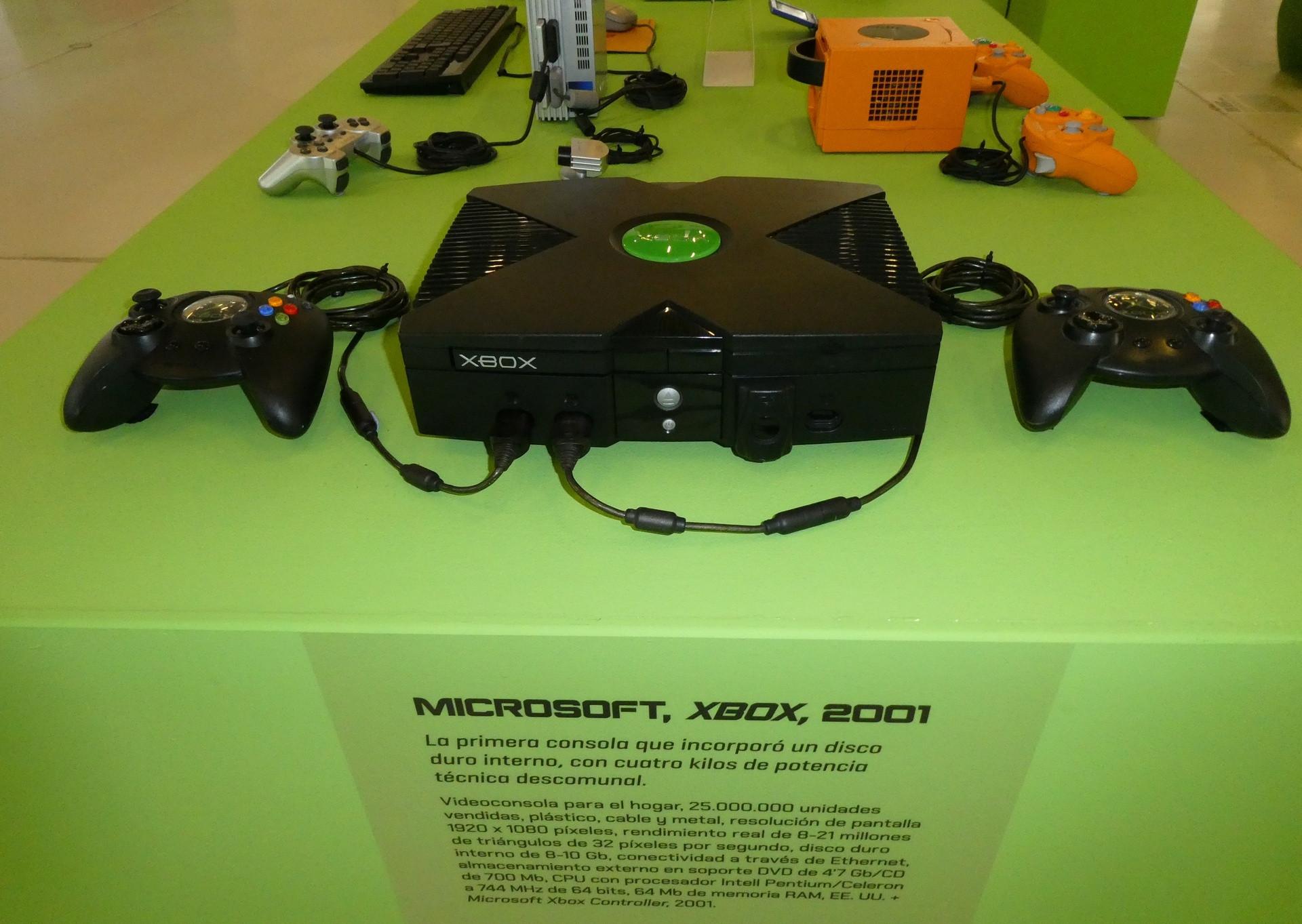
And here - Microsoft. The American company associated with Word and the blue screen of death, and in general, with software, not "iron" suddenly begins to sell its own "box" for games. It looked like a VCR with a plastic transformer, but was really powerful. Xbox had a better graphic, could play music from a hard drive, had online support from the beginning.
But most importantly - Halo. This shooter did what Mario did for Nintendo: Created a reason to buy a console. Master Chief became a new idol, game mechanics - a standard. Sony at that moment also had their masterpieces, but Microsoft managed to make one game that built the platform.
Of course, Xbox has never become a hit in Japan, but in the US and Europe the platform has shot. And the next generation of Xbox 360 showed that Microsoft could be even more popular than Playstation 3. Well, at least some time. The Xbox Live online service was revolutionary. Where Sony was still thinking how to connect players, Microsoft was already collecting whole armies of Halo 3 fans.
Nintendo kept separately. They always played in their game. Gamecube, Wii, Switch - every console is unusual, a little strange, but with a deep understanding of "fan". Microsoft did not try to win them. She did another: she built a platform for "adult" players - with serious graphics, with Call of Duty, with large open worlds.
Today, the difference is even more expressive. Nintendo is fun. Sony is beautiful. And Microsoft is a service. From Game pass you do not buy a game - you sign up for the game world. It's Netflix for gamers. And interesting - almost everyone else eventually went the same way. As always with Microsoft: the first to rarely become, but they fix the standard. Just as with Windows.
Failures and failures
But the giants fall. Microsoft has a list of misses - long, loud and, in places, funny.
Windows Phone is when Microsoft is late for a smartphone party. The interface was cool, but without additions it is a dead platform. Buying Nokia She only emphasized the scale of the defeat. Balmer himself acknowledged: "We have missed the mobile revolution."
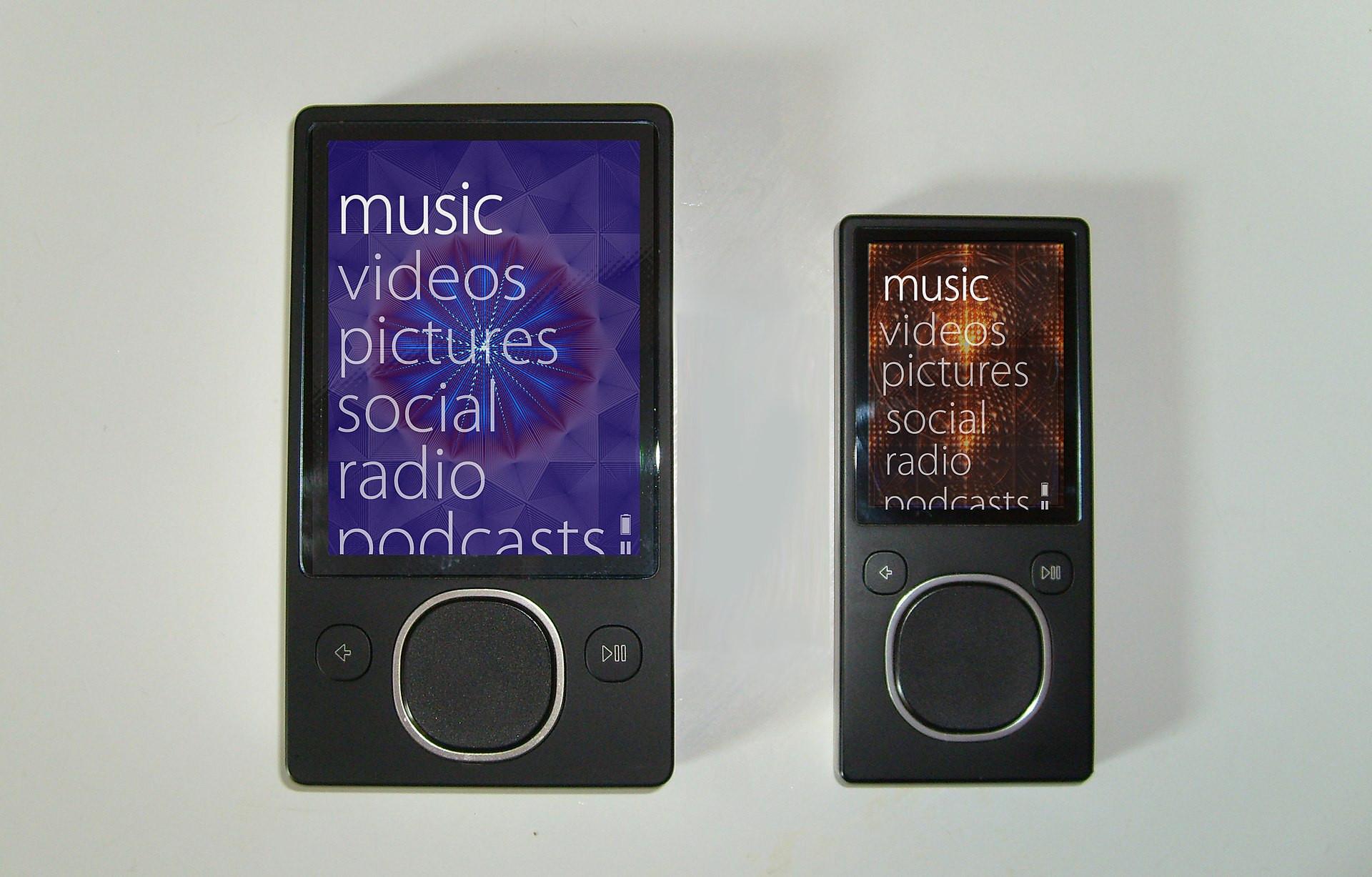
Zune is an attempt to kill an iPod that was born too late. Good player, unsuccessful timing, strange design, very cool software. Unfortunately, lifestyle has already sold Apple.
Microsoft Bob is an OS interface with a virtual house, dog and furniture. The idea of futuristic, the performance is not. Even "Clippies" seemed brilliant compared.
Kin is a phone for teenagers who lived 48 days. A billion dollars - less than 10,000 pieces are sold. Classic of non -marketing.
Windows Vista is an operating system with appetite larger than RAM users. Slow, glutnous, perfectly suited to love XP.
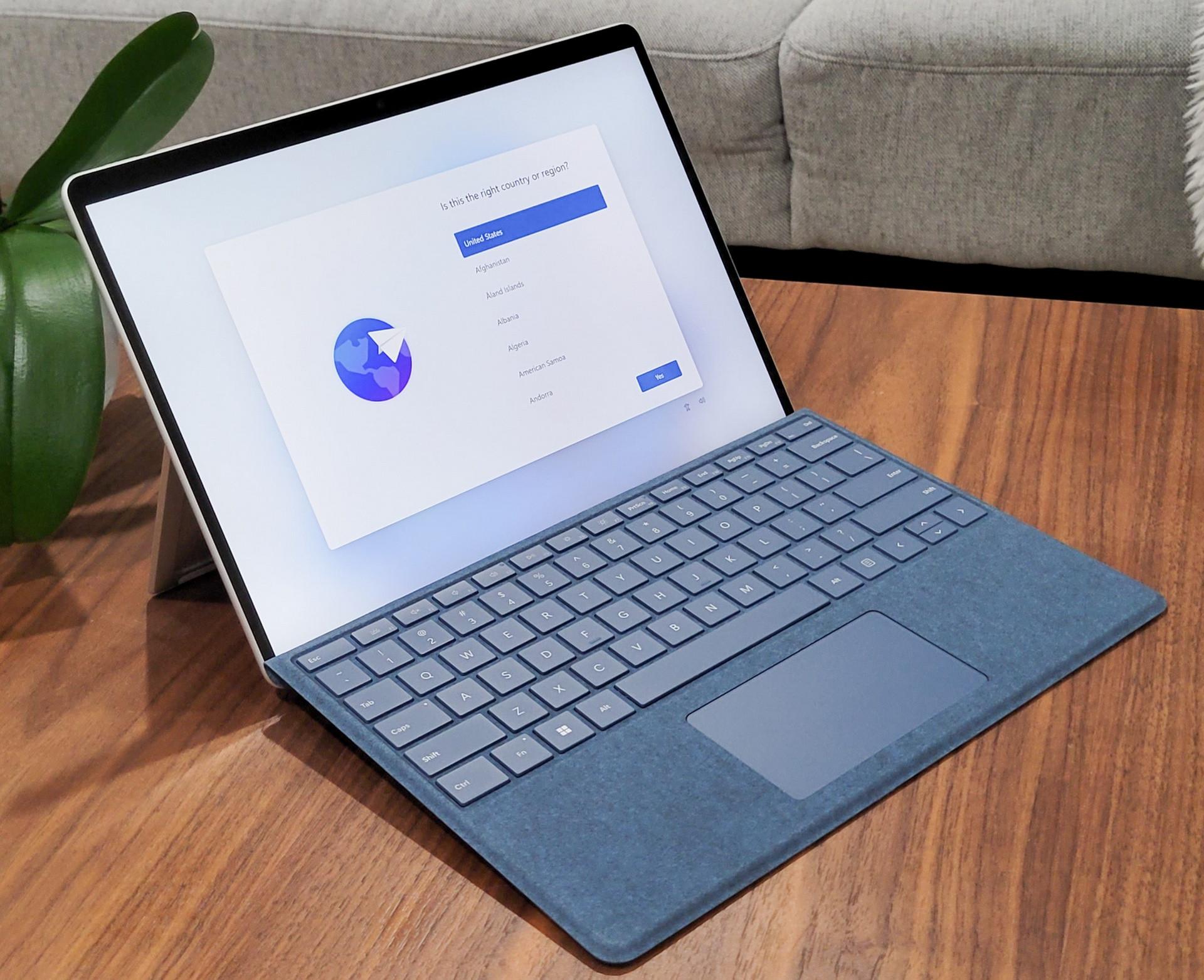
Surface RT is a Windows tablet that did not start the usual Windows programs. Confusion, file, $ 900 million losses.
However, Microsoft was not afraid to experiment - and quickly closed that she did not fly. Sometimes the horizon was not the opportunity, but the wall. But the giant went on.
Microsoft's most successful purchases
Playing is a special art Microsoft. And in this game it is a champion in the money triathlon.
Bungie is the first loud success. The little studio was playing Halo for Mac, but Microsoft decided it would be exclusive for Xbox. $ 30 million - and the consoles were no longer seen as a joke.
Mojang - $ 2.5 billion per pixel sandbox Minecraft. This digital LEGO is well entertained, especially the young generation, and serves as a decent educational tool. Microsoft did not buy a game - she bought a generation of players.
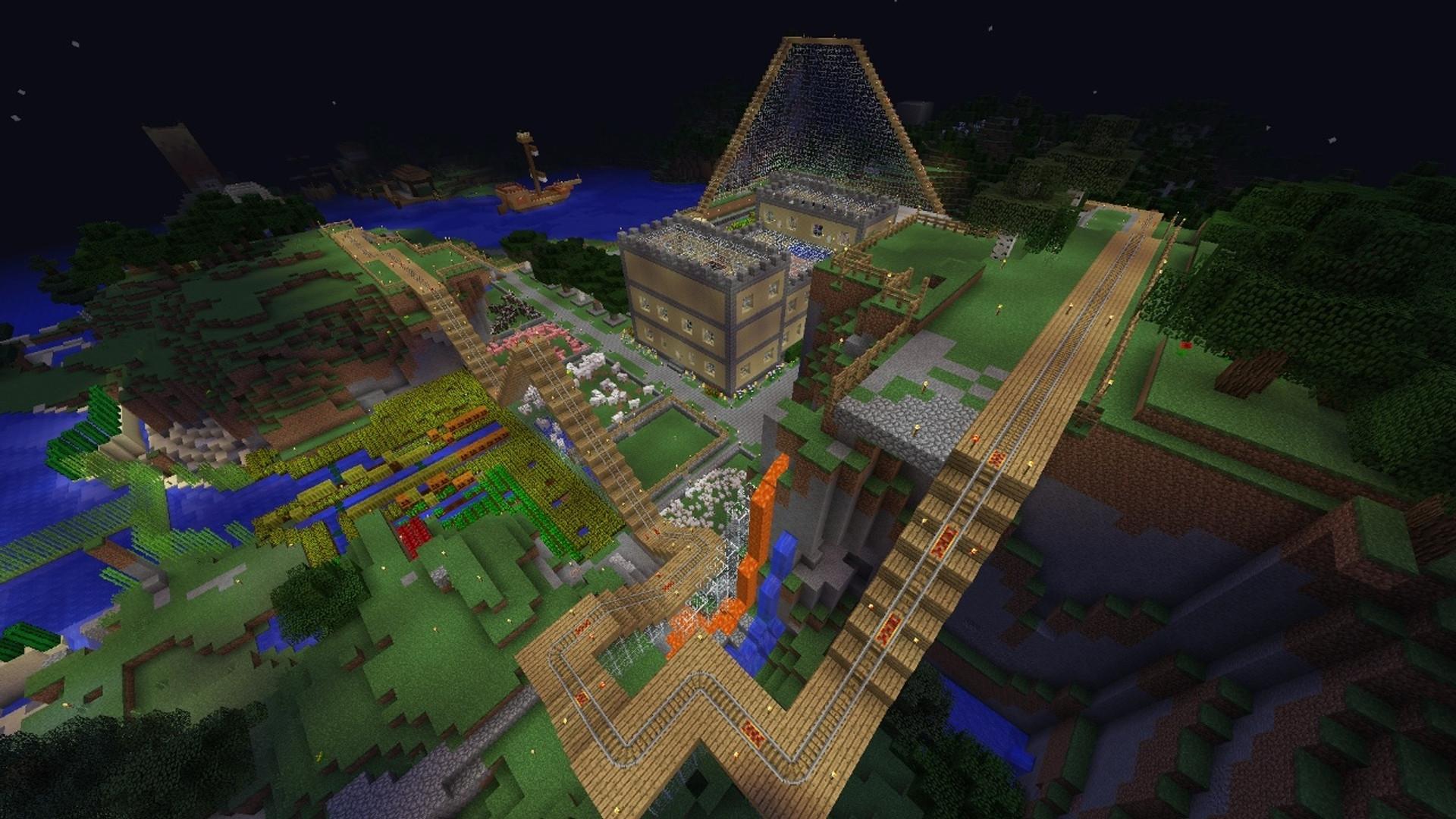
Bethesda - $ 7.5 billion for Fallout, Elder Scrolls, Doom and a bunch of worlds. A deal that made Microsoft owner of fantastic franchises. At the same time, she became a alarming call for Sony: "Look, we can do all this exclusive."
Activision Blizzard - There is no longer a bell, but a siren. $ 69 billion is the largest agreement in the history of the game industry. Call of Duty, World of Warcraft, Diablo, Overwatch, Candy Crush - Microsoft has collected the entire gaming palette under one roof. It's not just a purchase - it's entry into every gaming house. But courts, regulators, headings like "monopoly are approaching". The purchase was blocked for a long time and eventually allowed. But the warning sounded: next time everything could be more difficult.
LinkedIn - $ 26.2 billion per social network for office people. Bored? No. This is a database of the entire business-world: who is where it works, what is looking for. The ideal tool for promoting Teams, Office 365 and Azure.
Github is $ 7.5 billion for the largest code repository. Once upon a time, Microsoft and Open Source were like from different universes. Currently, Microsoft is a top -up container in open projects. Github gives her a live analytics from the heart of IT-world. Brilliantly.
And, of course, all this is about money. Since Satya Nadell became CEO in 2014, Microsoft's shares have taken off 5 times. Every billion investment returns with bonuses.
But there is another side of the coin - scale. Microsoft becomes too big. It is not just a strategy that it is a reason for antitrust checks and lawsuits. Blizzard was a big victory, but may not forgive the next purchase of the company. Because when you buy the world, the world begins to worry.
Techmenics with courts and betrayal: Microsoft, Apple and Google
Unfortunately, not everything in IT-world decides innovations. Sometimes lawyers still. Microsoft is a real champion in "Who Teas". And, of course, virtuoso to get the maximum from their ideas.
In 1988, Apple sued Windows 2.0 at Microsoft with a borrowed interface. Microsoft did not deny the similarity, but noted the common ancestors of Xerox Alto. Microsoft came out almost dry from the water - because between the lines of contracts with Apple it turned out that the cunning Gates had already signed permission to use some "borrowing".
Generally Microsoft's relationship with Apple is like the dramatic series "Everything is difficult." They quarreled, reconciled, fought again, and then suddenly Gates in 1997 invested $ 150 million in Apple, when they balanted on the verge of bankruptcy. Steve Jobs then stated from the Apple stage, "We are no longer enemies." Microsoft received a package of shares without a voice right and Apple has a chance for a second life. The irony is that, thanks to these money, it later triumphantly overtook Microsoft by capitalization.
But the real bitter plot unfolded in the new millennium. Microsoft sincerely believed in Windows Mobile: Start button, stylus, mobile Word. And Google - allegedly an ally - quietly developed Android. And when the time came, she just gave it to manufacturers for free. Microsoft stayed away.
But to lose beautiful is also art. Due to Microsoft patents, she began to receive licensed payments from Android. In fact, she earned billions on another's platform while her own Windows Phone was quietly disappearing.
Subsequently, Microsoft became more open: more services for everyone, less toxicity. But the lessons of the past learned. And in a new race-for artificial intelligence-it has already come in an adult: with an investment in Openai and a clear understanding that he wins not the one who dreams, but the one who works first.
Satya Nadell and present
Satya Nadell, the one who changed Steve Balmer in the post of CEO is not quite like a predecessor. He did not make herself at the conferences, did not beat the table on the table, did not predict the future in the style of cyberpunk. He just came and… restarted Microsoft.
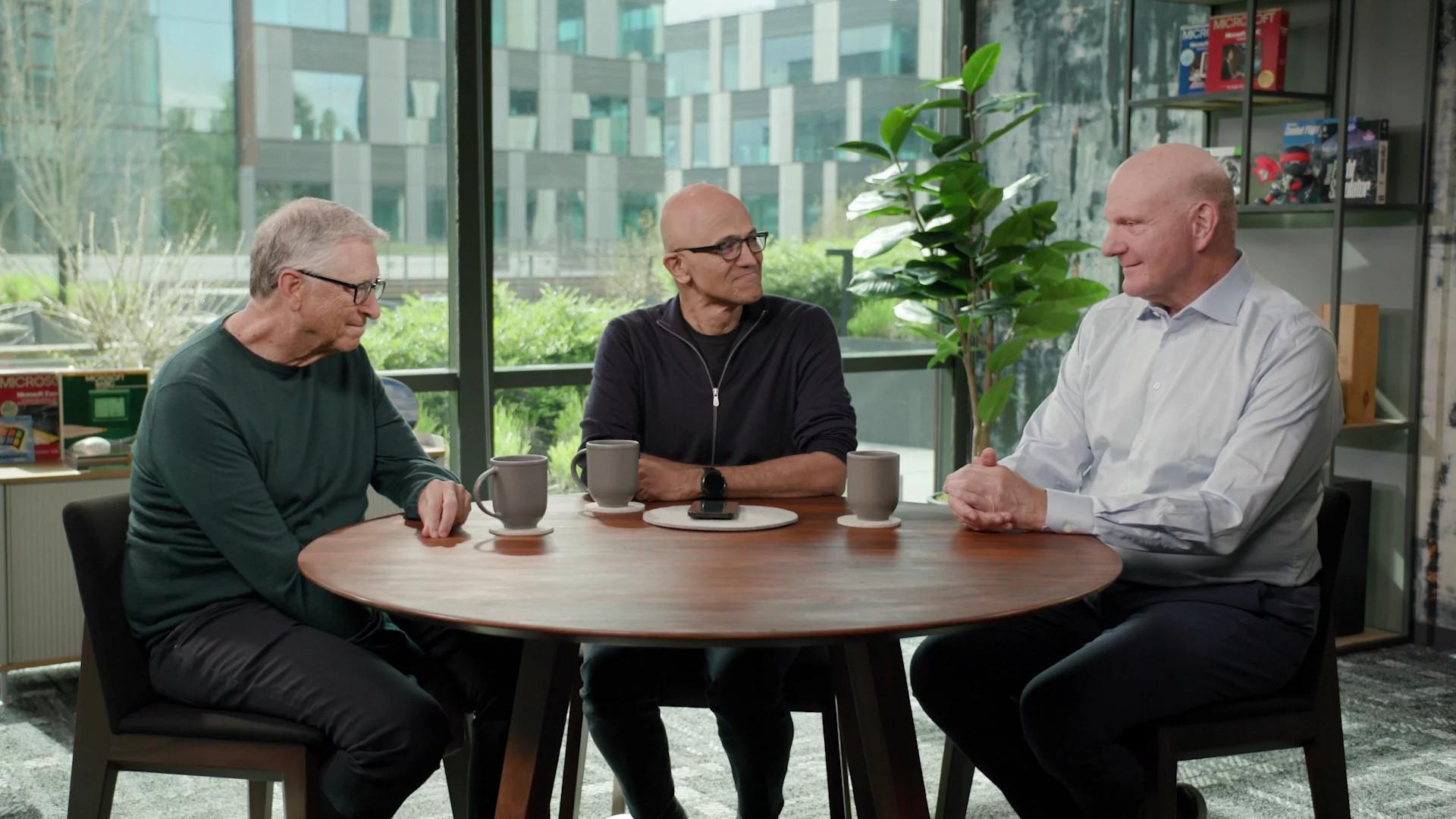
Under his leadership, Microsoft began to abandon Windows obsession as the sole source of profit and impact. The company has a new religion: Cloud. More precisely - Azure. Although Azure appeared in 2008, that is, in a new CEO, Nadella not only got into cloud services - he made them a core of business. And it worked. Microsoft was associated with Start and PowerPoint. Now-with neural networks, giant date centers and artificial intelligence.
Another - Nadell changed the atmosphere of the company. Instead of "Smoke throat to survive" something new appeared - Growth Mindset. Culture of learning, adaptation, openness to errors and other technologies (even to Linux!). Microsoft has become more friendly. Both for developers and users.
It was by Nadella Microsoft that Openai became a partner of Openai, the same company that created Chatgpt. Microsoft has invested billions in it, and not only in money, even in computing. And as a result-Copilot in Word and Excel, AI assistant in Bing, reasonable functions in Teams, language synthesis, code, documents-all this is now embedded. Nadell says that artificial intelligence today is like the Internet in the 90's. We move from "Autopilot" to "Copyloil": when the car is not just advised, but works near you, literally in one room.
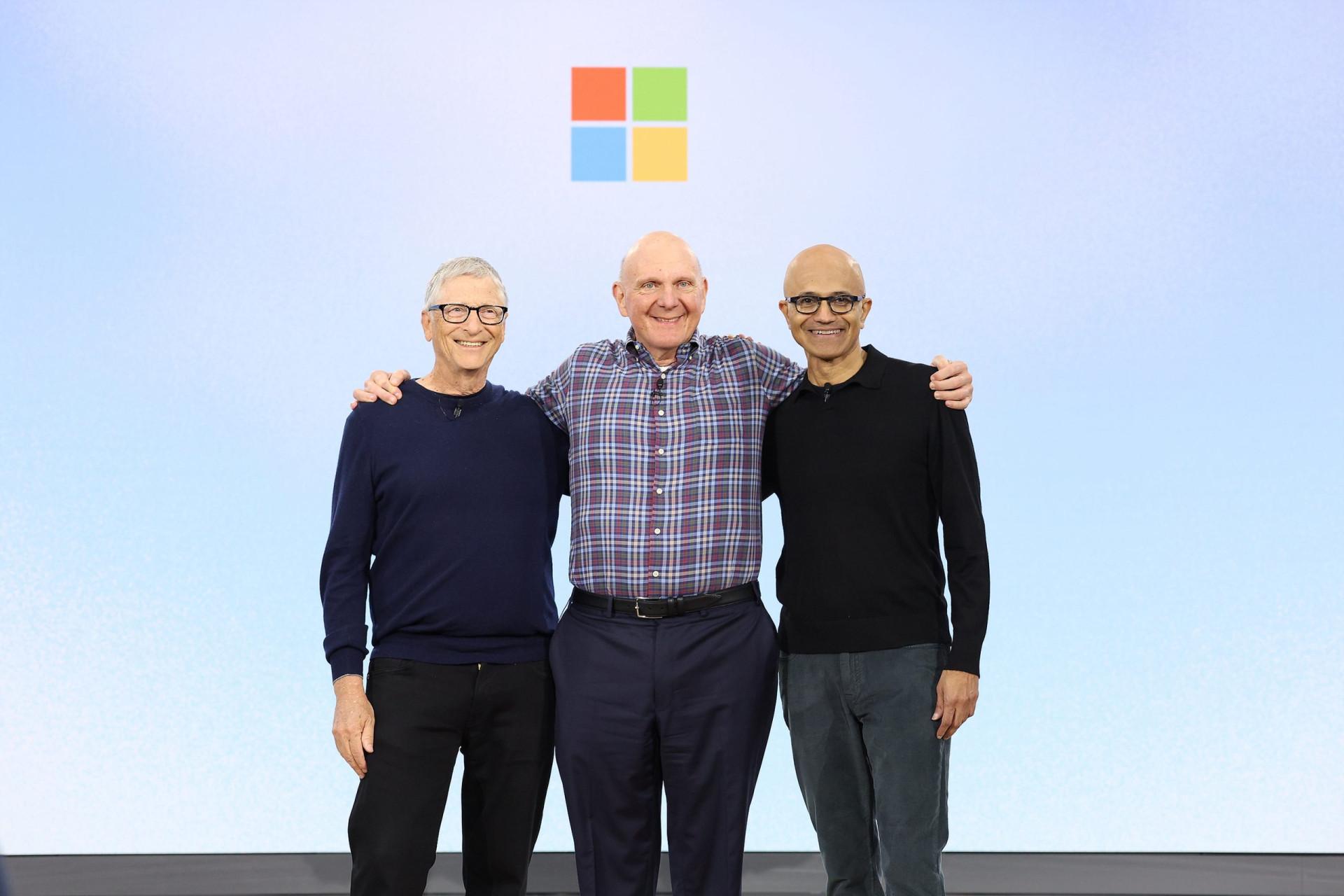
Of course, not everything is so rain. Nadell says honestly: yes, AI will change the labor market. Some professions will disappear, others will become more difficult. Salaries will increase in some sectors and fall into others. But Microsoft not just challenges this challenge to the world - they want to control how these changes will happen. With ethics. With public discussions. With transparency. At least, they promise.
And here's what is interesting: Microsoft has become "fashionable" again. A company that does not try to buy everything (well, except for Activision Blizzard - but this is a separate topic), and creates something really needed. A company that no longer seems dinosaur from the past. And rather - a quiet giant, which is stolen in the future ... with a copilock nearby.
From financial results the fourth quarter of 2024 It became clear that this path was successful. The company's main profit is now coming from Azure clouds. It is not just a dated centers, but a powerful ecosystem that built artificial intelligence into all aspects of Microsoft-from Word to Teams, from Bing to Copilot. Such a change in business approach has allowed Microsoft to become not only a technological leader, but also to maintain relevance in the world where virtual helpers and clouds become the norm.
That's the way she is Microsoft in the year of her 50th anniversary. Instead of fighting for a monopoly, she became an architect of the era, where cars are partners, not competitors. Microsoft anniversary is not about "oh, they are already 50. It's about "oh, they are again ahead." And maybe this time - for a long time.

